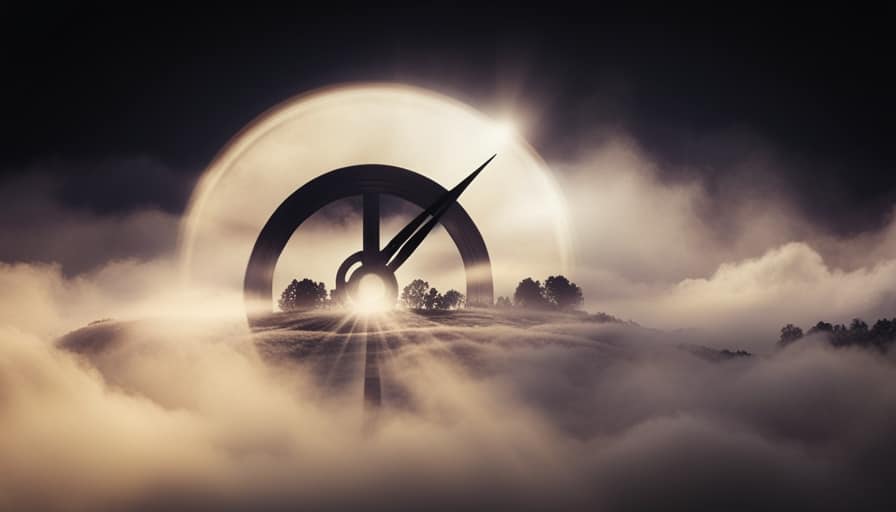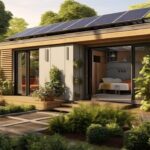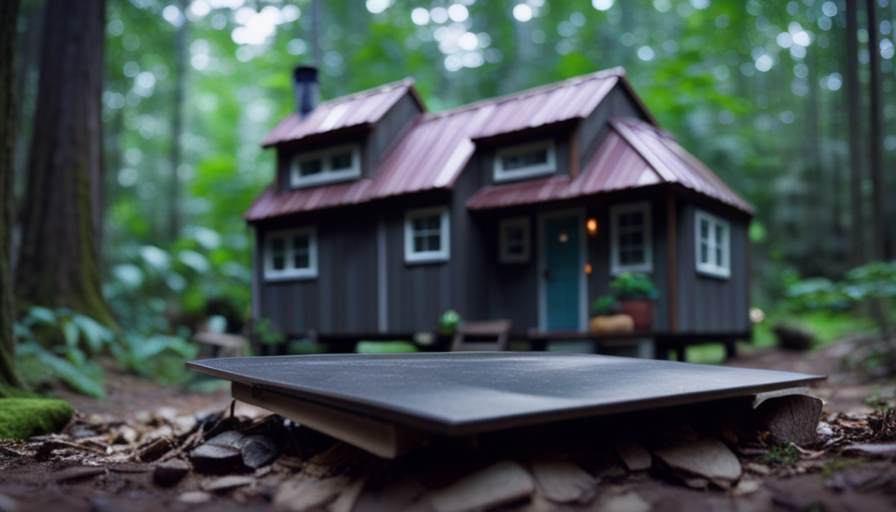As I explore the beginnings of the tiny house movement, I am amazed by the simple twist of fate that sparked its modest origins. It all began with a longing for simplicity, a drive to live smaller, and an increasing worry for our environment. From these seemingly disconnected factors, a movement emerged.
In this article, I will guide you through the fascinating journey of how the tiny house movement began and how it has evolved into a mainstream lifestyle choice.
Key Takeaways
- Architects like Henry David Thoreau and Le Corbusier influenced the tiny house movement with their advocacy for simple living and efficient use of space.
- Lloyd Kahn’s book ‘Shelter’ in 1973 showcased alternative housing options, including tiny houses, which helped popularize the concept.
- Jay Shafer’s own tiny house on wheels in the late 1990s served as the foundation for the modern tiny house movement.
- Sarah Susanka’s book ‘The Not So Big House’ emphasized the importance of quality over quantity and challenged the notion that bigger is always better, further promoting the idea of living in smaller spaces.
The Early Influences: Exploring the Predecessors of the Tiny House Movement
What were the early influences that led to the development of the tiny house movement?
The tiny house movement was influenced by early pioneers and architectural influences. In the early 20th century, architects such as Henry David Thoreau and Le Corbusier advocated for simple living and efficient use of space. Thoreau’s book ‘Walden’ inspired many to live a minimalist lifestyle in small cabins, while Le Corbusier’s concept of the ‘machine for living’ promoted the idea of compact and functional homes.

These ideas laid the foundation for the tiny house movement, emphasizing the importance of sustainability, affordability, and minimalism. As people began to prioritize experiences over possessions, the appeal of tiny houses grew.
These early influences set the stage for the first tiny house pioneers: who were the trailblazers.
The First Tiny House Pioneers: Who Were the Trailblazers
As I delve into the history of the tiny house movement, I’m fascinated by the question of who were the trailblazers, the first pioneers of this movement. Here are the first tiny house pioneers and their motivations, inspirations, and the challenges they faced:
-
Lloyd Kahn: Inspired by the counterculture movement of the 1960s, Kahn published the book ‘Shelter’ in 1973, which showcased alternative housing options, including tiny houses. He believed in the importance of self-reliance and sustainability.
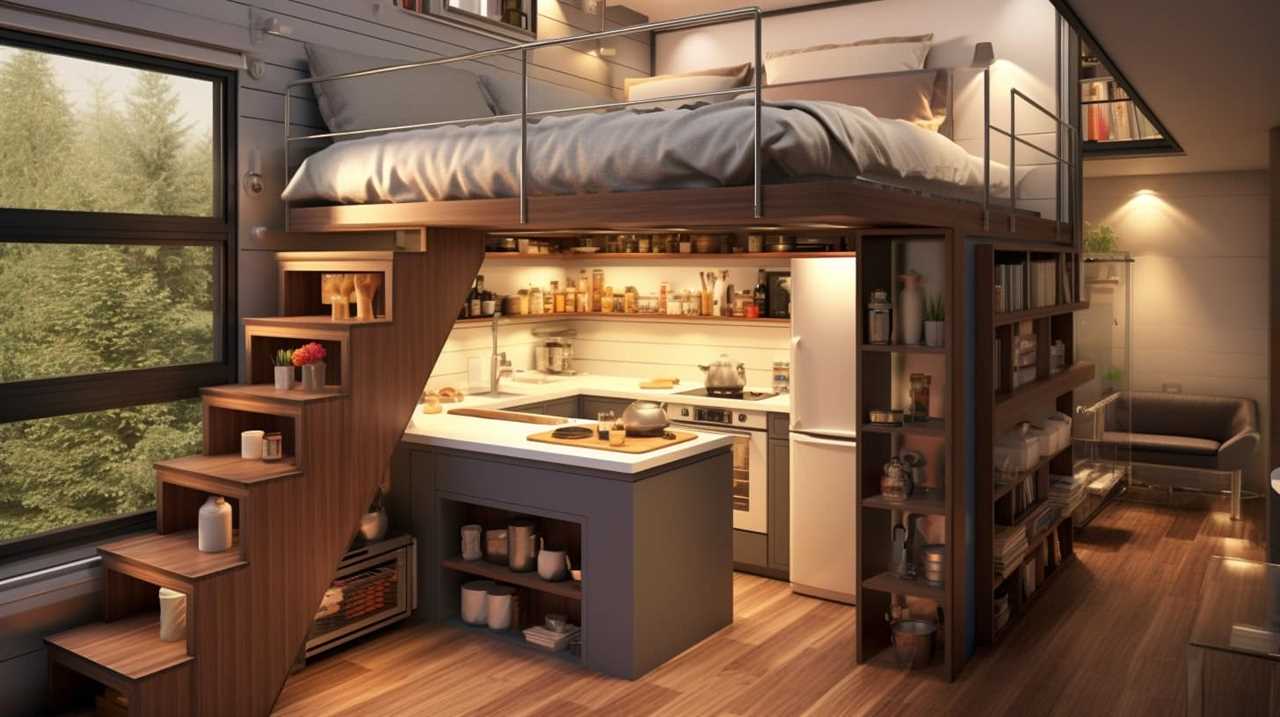
-
Jay Shafer: In the late 1990s, Shafer designed and built his own tiny house on wheels, which became the foundation for the modern tiny house movement. His motivation was to downsize and live a simpler life, free from the burden of excessive possessions.
-
Sarah Susanka: Susanka’s book ‘The Not So Big House’ (1998) emphasized the importance of quality over quantity and the idea that smaller spaces can still provide comfort and beauty. She aimed to challenge the notion that bigger is always better.
These pioneers faced challenges such as zoning regulations, societal norms, and limited resources, but their dedication and passion paved the way for the tiny house movement we know today.
The Rise of Small Living: How the Movement Gained Momentum
I have witnessed a significant increase in interest and adoption of small living as the tiny house movement gained momentum. People are recognizing the benefits of downsizing and simplifying their lives.

One of the main advantages of living in a tiny house is the financial freedom it provides. With lower mortgage payments, utility bills, and maintenance costs, individuals can allocate more of their income towards experiences and personal goals.
Additionally, small living promotes sustainability and reduces environmental impact by using fewer resources and generating less waste.
However, transitioning to small living does come with its challenges. Limited space requires careful organization and creative storage solutions. It also requires a mindset shift, as it may be difficult to let go of sentimental belongings.
Nonetheless, the rewards of living small are worth the effort, as it allows people to focus on what truly matters in life.

The Impact of Sustainable Living: Environmentally-Friendly Practices in Tiny Homes
Often overlooked, but crucial to the tiny house movement, is the impact of sustainable living and the environmentally-friendly practices that are implemented in these small homes. Tiny homes are designed with a focus on sustainability, using materials that have a minimal impact on the environment. Here are three ways in which tiny homes promote sustainable living:
-
Sustainable materials: Tiny homes are often built using reclaimed or recycled materials, reducing the need for new resources and minimizing waste.
-
Energy efficiency: Tiny homes are designed to be energy-efficient, with features such as solar panels, energy-efficient appliances, and insulation that helps to reduce heating and cooling costs.
-
Water conservation: Many tiny homes incorporate water-saving technologies, such as low-flow fixtures and rainwater collection systems, to minimize water usage.
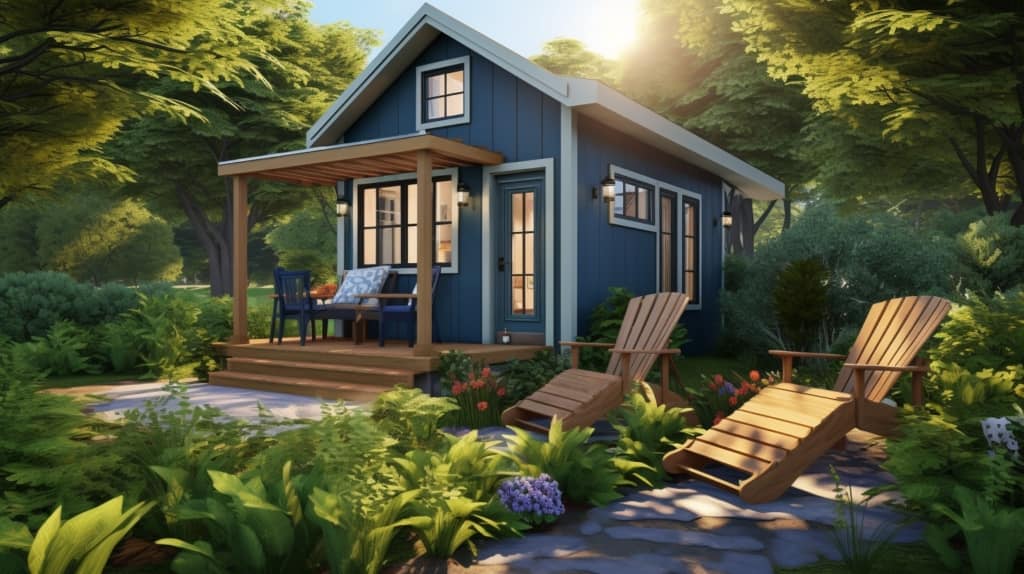
By adopting these environmentally-friendly practices, tiny homes demonstrate that sustainable living isn’t only possible but also practical.
This commitment to sustainability has played a significant role in the spread of the tiny house movement, as people increasingly recognize the importance of reducing their environmental impact and embracing a more sustainable lifestyle.
The Spread of the Movement: From Niche Trend to Mainstream Lifestyle Choice
The growing popularity of tiny homes has transformed the movement from a niche trend to a mainstream lifestyle choice. This shift has significant social implications and economic benefits.
On a social level, the tiny house movement challenges the conventional notion of homeownership and encourages a more minimalist and sustainable lifestyle. By downsizing their living spaces, individuals can reduce their carbon footprint and live more environmentally friendly lives. Moreover, the tiny house movement promotes a sense of community and connection, as many tiny home enthusiasts choose to live in intentional communities or share resources with like-minded individuals.

From an economic perspective, tiny homes offer an affordable housing alternative, allowing individuals to reduce their mortgage payments or even be mortgage-free. Additionally, the smaller size of these homes leads to reduced energy consumption and lower utility bills, contributing to long-term cost savings.
Frequently Asked Questions
How Much Does It Cost to Build a Tiny House?
Building a tiny house can cost anywhere from $10,000 to $100,000, depending on factors like size, materials, and location. Financing options include personal savings, loans, and crowdfunding. It’s important to compare costs and explore different financing options to find what works best for you.
What Are the Main Challenges of Living in a Tiny House?
Living in a tiny house presents unique challenges, such as limited space and adapting to a minimalistic lifestyle. However, it can also foster creativity, organization, and a greater appreciation for the simple things in life.
Are There Any Legal Restrictions or Regulations for Tiny Houses?
There are legal implications and zoning laws that vary by location for tiny houses. It is important to research and understand the regulations in your area before building or living in a tiny house.

How Do Tiny House Owners Deal With Limited Storage Space?
I maximize efficiency and get creative with organization in my tiny house. Limited storage space forces me to be intentional about what I keep and find innovative ways to utilize every inch.
Are There Any Disadvantages to Living in a Tiny House?
Living in a tiny house has its drawbacks. Financial limitations can make it challenging to afford the necessary materials and utilities. Privacy concerns may arise due to the compact living space and lack of separate rooms.
Conclusion
In conclusion, the tiny house movement began with a combination of influences, including early predecessors, pioneering individuals, and a growing interest in sustainable living.
This niche trend has now evolved into a mainstream lifestyle choice, with people from all walks of life embracing the benefits of small living.

From reducing environmental impact to simplifying our lives, the tiny house movement offers a fresh perspective on what it means to call a house a home.
As they say, sometimes less is more.
I’m Theodore, and I love tiny houses. In fact, I’m the author of Tiny House 43, a book about tiny houses that are also tree houses. I think they’re magical places where imaginations can run wild and adventures are just waiting to happen.
While tree houses are often associated with childhood, they can be the perfect adult retreat. They offer a cozy space to relax and unwind, surrounded by nature. And since they’re typically built on stilts or raised platforms, they offer stunning views that traditional homes simply can’t match.
If you’re looking for a unique and romantic getaway, a tree house tiny house might just be the perfect option.

